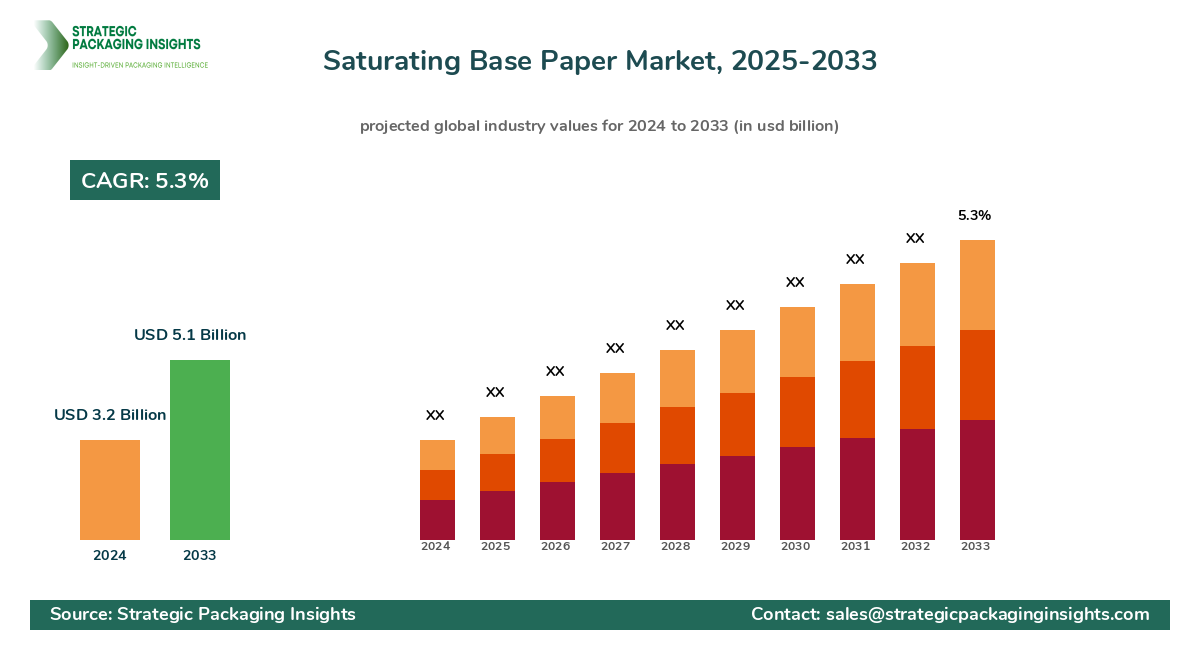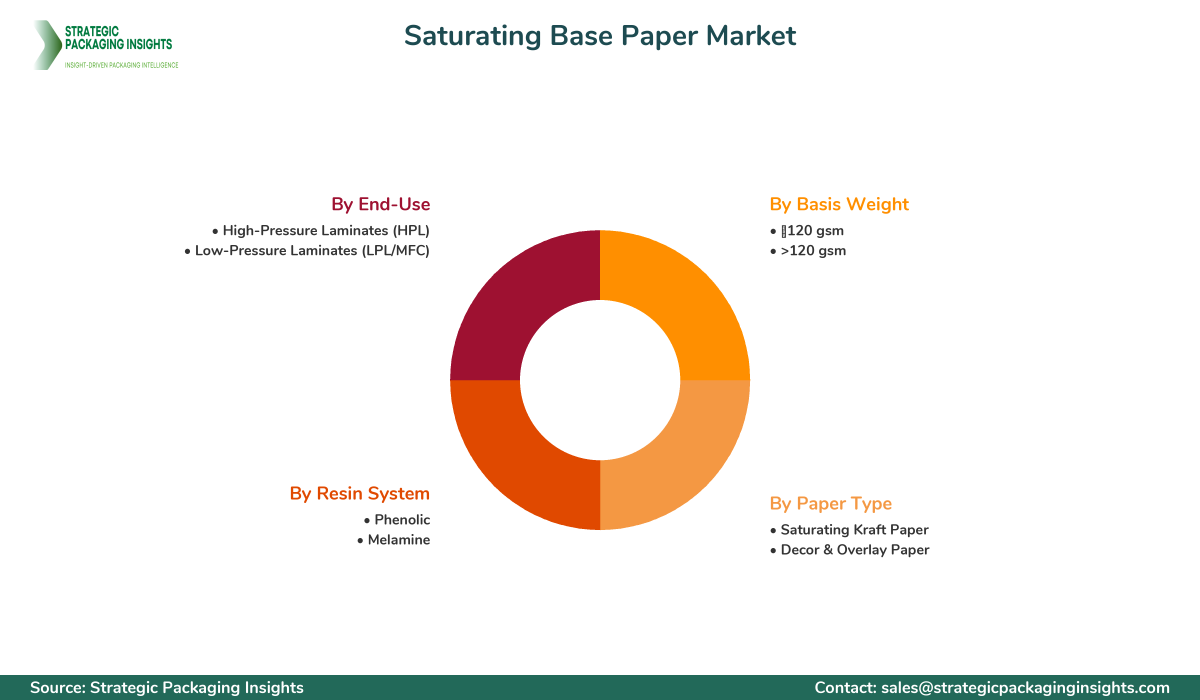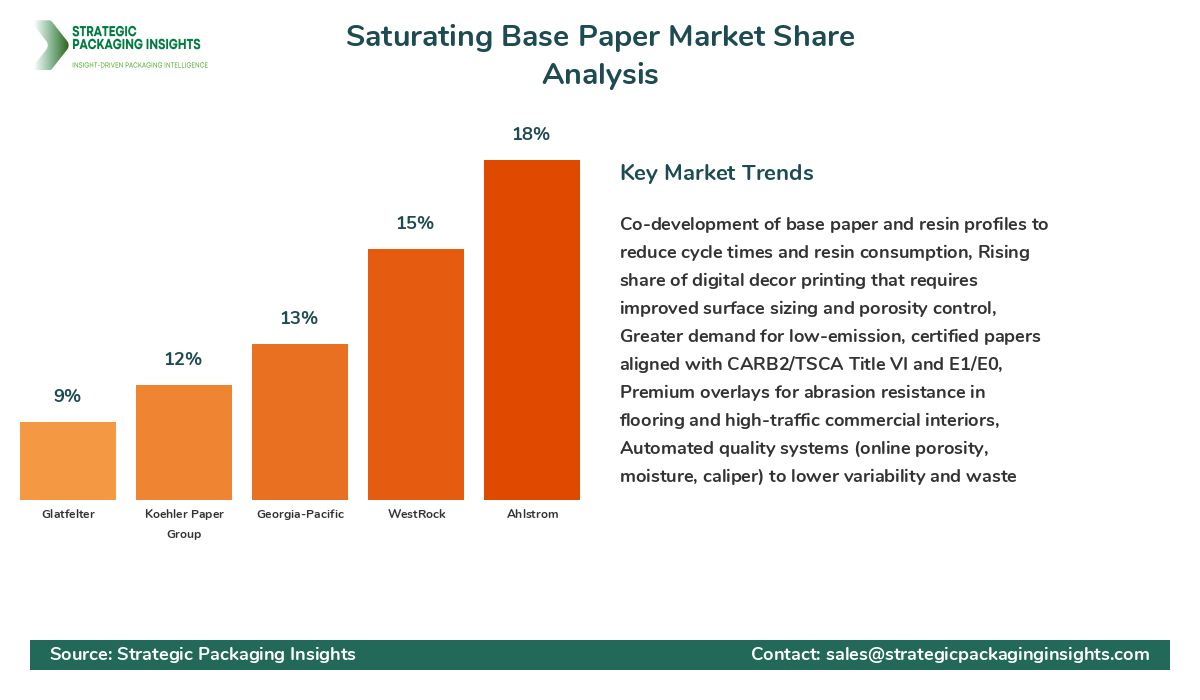- Home
- Packaging Products
- Saturating Base Paper Market Size, Future Growth and Forecast 2033
Saturating Base Paper Market Size, Future Growth and Forecast 2033
Saturating Base Paper Market Segments - by Paper Type (Saturating Kraft Paper, Decor & Overlay Paper), Resin System (Phenolic, Melamine), End-Use (High-Pressure Laminates, Low-Pressure Laminates), and Basis Weight (≤120 gsm, >120 gsm) - Market Dynamics, Growth Opportunities, Strategic Drivers, and PESTLE Outlook (2025–2033)
Saturating Base Paper Market Outlook
The global saturating base paper market was valued at USD 3.2 billion in 2024 and is projected to reach USD 5.1 billion by 2033, growing at a CAGR of 5.3% during the forecast period 2025–2033. Demand scales with the production of high-pressure laminates (HPL), low-pressure melamine-faced boards (LPL/MFC), and engineered flooring, with furniture, cabinets, worktops, wall panels, and compact laminate sheets providing the core volume. Producers have improved resin uptake, porosity control, and basis weight stability to meet tighter lamination windows and faster press cycles, while global wood-based panel output and renovation cycles in North America and Europe anchor steady offtake. Asia Pacific leads in volume on the back of large furniture and flooring ecosystems in China, India, and Southeast Asia, while Europe and North America command premium grades that deliver superior surface uniformity, low pinhole counts, and consistent phenolic and melamine resin compatibility. As laminators optimize press utilization, convertors request narrower moisture variability, higher cross-direction strength, and better lay-flat behavior, all of which drive specification-led purchases and long-term supply contracts with top specialty mills.
Report Scope
| Attributes | Details |
| Report Title | Saturating Base Paper Market Size, Future Growth and Forecast 2033 |
| Base Year | 2024 |
| Historic Data | 2017-2023 |
| Forecast Period | 2025-2033 |
| Number of Pages | 174 |
| Paper Type | Saturating Kraft Paper, Decor & Overlay Paper |
| Resin System | Phenolic, Melamine |
| End-Use | High-Pressure Laminates (HPL), Low-Pressure Laminates (LPL/MFC) |
| Basis Weight | ≤120 gsm, >120 gsm |
| Customization Available | Yes* |
Key Highlights Saturating Base Paper Market
- HPL/LPL momentum: Laminate demand in furniture, retail fixtures, kitchens, and commercial interiors remains the single largest driver of saturating base paper consumption.
- Shift to premium decor: Growth in embossed-in-register designs and matte/super-matte finishes is lifting demand for high-uniformity decor and overlay papers with precise opacity and fiber formation.
- Resin optimization: Mills are tailoring base paper porosity and absorption profiles to phenolic cores and melamine top layers to shorten press times and cut resin consumption by 3–7% at laminators.
- Basis weight control: Tight caliper and moisture specs (often ±1.5%) reduce rejects in fast-cycle short-cycle presses, boosting total effective yield for board producers.
- Compliance pressure: Stricter emissions and formaldehyde regulations (CARB2/TSCA Title VI, E1/E0) push cleaner chemistries and drive adoption of low-emission melamine systems and barrier layers.
- Fiber sourcing: Certified pulp (FSC, PEFC) and recycled-fiber blends are gaining traction in select grades as brands aim to hit ESG targets without compromising press performance.
- Regional capacity shifts: Asia Pacific adds saturation and decor capacity, while Europe and the U.S. focus on value-added, specialty runs and service reliability.
- Digital decoration: Growth in digital printing of decor designs requires base papers with upgraded surface sizing, consistent porosity, and improved print receptivity.
- Cost volatility: Energy and chemical prices, plus pulp fluctuations, continue to pressure margins; suppliers are raising prices and using surcharges tied to energy indices.
- Consolidation watch: Strategic integrations between paper producers, impregnators, and laminators accelerate differentiation based on service, shorter lead times, and co-development.
Competitive Intelligence
The competitive landscape features a concentrated core of Specialty Paper manufacturers with deep lamination expertise and long-standing OEM relationships. Ahlstrom, WestRock, and Georgia-Pacific remain prominent in saturating kraft for phenolic cores, while Koehler, Hansol Paper, and Nippon Paper stand out in high-spec decor and overlay papers keyed to melamine systems. Glatfelter extends into saturation papers and wallcover bases through composite fiber know-how, and Mativ (via Neenah Technical Materials) offers engineered saturation papers with tight property control for premium applications. In Europe, Koehler and Ahlstrom push innovation around opacity, printability, and surface strength to support complex finishes and EIR textures; in North America, WestRock and Georgia-Pacific leverage scale and North American service models to achieve high client retention. In Asia, Shandong Qifeng New Material and leading decor printers such as Schattdecor influence preferred specs and value-added print-readiness. Market share shifts favor suppliers who deliver consistent runnability, low defect rates, shorter lead times, and secure pulp sourcing. Leaders are investing in automation, advanced refining, and online measurement to ensure porosity and formation uniformity, while stragglers struggle with energy costs and inconsistent furnish. Differentiation aligns with technical support at the laminator press, resin co-optimization, and VOC-compliant performance; companies that co-develop grades for faster press cycles and lower resin pick-up are gaining ground, while mills that rely on commodity tonnage without service depth are conceding share in premium segments.
Regional Market Intelligence of Saturating Base Paper
Regional market size (USD Billion): North America: 2024—0.75; 2033—1.10. Europe: 2024—0.85; 2033—1.28. Asia Pacific: 2024—1.35; 2033—2.30. Latin America: 2024—0.15; 2033—0.24. Middle East & Africa: 2024—0.10; 2033—0.18. Asia Pacific leads due to high furniture and flooring production, dense clusters of particleboard/MDF producers, and growing investments by laminators and decor printers, especially in China and Vietnam. The region’s rapid urbanization and housing starts feed steady laminate usage in cabinets and interior panels, while OEMs demand cost-effective grades with reliable caliper and porosity for short-cycle lines. Europe excels in premium décor quality and sustainability, driven by strict EHS policies and design-forward renovations; buyers prioritize opacity, shade stability, and low emissions, underpinning margins for high-spec base papers. North America benefits from elevated R&R spending, retail buildouts, and commercial fit-outs, pushing a balanced mix of HPL and LPL volume, with a preference for service reliability and resin-efficient grades to mitigate labor and energy costs. Latin America grows with localized board capacity and cabinet production in Brazil and Mexico, creating pockets of opportunity for competitively priced saturating kraft and mid-tier decor papers. The Middle East & Africa remain smaller but rising as tourism, retail, and hospitality projects adopt durable laminates; distributors and regional impregnators play a key role in bridging lead times and technical support.
Top Countries Insights in Saturating Base Paper
China (2024: USD 0.90 Billion; CAGR: 7): Growth stems from robust furniture exports, accelerating domestic renovations, and significant MDF/particleboard capacity, with local impregnators scaling to serve fast-cycle lines; key challenges include energy cost swings and environmental compliance for emissions. United States (2024: USD 0.60 Billion; CAGR: 4): Demand is anchored in kitchen/bath remodeling, retail fixtures, and institutional interiors, with customers emphasizing grade consistency, technical service at the press, and stable lead times; regulatory pressure around formaldehyde drives adoption of lower-emission systems and strong barrier layers. Germany (2024: USD 0.35 Billion; CAGR: 3): As a design hub for premium laminates and engineered flooring, Germany pushes suppliers to deliver exceptional formation, low pinholes, and tight color control suitable for next-gen print and EIR textures; sustainability certifications and circularity metrics are baseline requirements. India (2024: USD 0.22 Billion; CAGR: 8): Rising middle-class housing, rapid retail buildout, and capacity expansion in laminates are lifting offtake of cost-effective saturating kraft and decor base papers; the market values competitive pricing, reliable moisture control, and improved resin compatibility to raise lamination throughput. Brazil (2024: USD 0.12 Billion; CAGR: 5): Furniture clusters in the South and expanding panel capacity sustain steady demand; customers look for locally available grades that balance cost with adequate runnability, while currency volatility and logistics remain planning challenges for importers and distributors.
Saturating Base Paper Market Segments Insights
Paper Type Analysis
Saturating kraft paper and decor/overlay papers play distinct roles in laminate construction and each segment shows different performance and pricing dynamics. Saturating kraft—used mainly as core sheets in phenolic-impregnated stacks for HPL and compact laminates—competes on uniform porosity, resin uptake efficiency, and cross-machine strength to deliver flat, dense, and defect-minimized panels. Mills invest in refining strategies, resin interaction labs, and online porosity control to ensure predictable saturation and reduced press times, which laminators translate into improved throughput and lower resin cost per square meter. Decor and overlay papers target the visible surface, where opacity, shade stability, surface strength, and print receptivity dominate specifications; growth in super-matte, anti-fingerprint, and EIR textures lifts demand for premium base papers that can handle intense embossing without fiber lift or surface micro-defects. The rise of digital decor printing pulls in base papers with tighter formation and controlled ink holdout to maintain pattern fidelity, while overlays need exceptionally clean furnish and low pinhole counts to deliver abrasion resistance and consistent gloss.
Commercial interiors, residential cabinetry, and healthcare environments keep pushing for more durable, hygienic, and easy-to-clean surfaces, which in turn raises expectations for both paper families. For saturating kraft, phenolic compatibility and dimensional stability at elevated temperature and pressure remain prime buying criteria, with high basis-weight grades lending stiffness and impact resistance. For decor and overlay papers, suppliers tune opacity, brightness, and surface sizing to support high-resolution printing and uniform melamine resin flow, reducing orange peel and maintaining clarity over light and dark designs. Competitive intensity is higher in decor and overlays where design cycles are faster and brand owners demand frequent shade and texture refreshes; suppliers that align production planning with printers and impregnators capture more repeat business. Meanwhile, saturating kraft maintains longer qualification cycles and higher switching costs due to core performance implications, favoring incumbents with proven long-run stability and strong technical field support.
Resin System Analysis
Phenolic and melamine systems shape how base papers are engineered and qualified at converters. Phenolic resin saturation of kraft cores demands a carefully balanced porosity window and consistent thickness to achieve full impregnation, minimize blisters, and withstand high press temperatures without dimensional drift; buyers prioritize papers that enable lower resin pick-up without compromising mechanical properties or dark-core uniformity. In contrast, melamine resins for decor and overlays require high surface strength, low linting, predictable flow, and optical clarity so that printed patterns, textures, and protective top layers appear flawless. As laminators chase shorter cycles and higher line speeds, both systems reward papers that have narrow moisture variability, smooth formation, and optimal absorption curves, which reduce rejects and improve panel flatness. Suppliers with in-house impregnation pilots and press simulation equipment co-develop grades that dial in resin viscosity, pick-up targets, and drying profiles, creating defensible performance advantages and sticky customer relationships.
Regulatory changes and sustainability targets are reshaping resin choices, pushing manufacturers toward low-emission formulations and optimized barrier layers where needed. Phenolic systems benefit from papers that help reduce free phenol carryover and ensure consistent cure, while melamine systems gain from base papers engineered for minimal formaldehyde release and strong post-press appearance. Some applications are testing alternative thermosets and hybrid systems, which require even tighter paper property control to maintain panel quality; this opens white-space for premium base papers that can bridge multiple chemistries with minimal requalification. The net result is a steady move toward specification-driven procurement, where resin-paper co-compatibility and proven line performance outweigh commodity pricing, especially in commercial projects with strict indoor air quality requirements.
End-Use Analysis
High-pressure laminates (HPL) and low-pressure laminates (LPL/MFC) remain the dominant outlets and they differ in substrate needs and cost sensitivity. HPL, widely used in worktops, compact laminates, healthcare surfaces, and retail fixtures, relies on multiple saturated kraft core layers with decor and overlays, using elevated pressure and temperature to achieve exceptional impact, scratch, and chemical resistance. This segment values base papers that enable fast, consistent saturation and high mechanical strength, supporting thicker builds and complex postforming in certain grades. LPL/MFC, applied directly to particleboard or MDF in short-cycle presses, favors cost-effective decor and overlay grades that deliver good appearance and adequate abrasion resistance with high productivity; here, surface quality, print clarity, and precise opacity are critical because the paper is closer to the end user’s visual field. Growth in EIR and deep textures raises the bar for surface strength and print fidelity, while the move toward anti-fingerprint and soft-touch finishes increases the need for decor papers that maintain a uniform surface during pressing and subsequent handling.
Commercial construction, residential renovation cycles, and the steady churn of retail and hospitality fit-outs support long-term demand in both segments. HPL gains from performance-driven use cases such as hospitals, schools, and transit areas where durability and cleanability matter most, while LPL captures large volumes in kitchens, closets, and furniture carcasses where cost and throughput dominate. Flooring laminate producers keep evolving plank formats and abrasion specs, which places emphasis on overlay papers with very low defect levels and controlled resin flow to hit AC ratings. The net effect is a two-speed paper market: premium, technically demanding grades that command higher margins and longer qualifications in HPL and high-end furniture, and cost-optimized but reliable grades in LPL where service and lead-time reliability decide supplier selection.
Basis Weight Analysis
Basis weight segments (≤120 gsm and >120 gsm) align with distinct performance targets across core, decor, and overlay applications. At ≤120 gsm, papers typically serve decor and overlays where surface uniformity, opacity, and precise resin flow are prioritized; these grades must resist picking and linting under melamine saturation and pressing, while preserving print detail and optical clarity. Mills tune fiber blends, refining intensity, and surface sizing to hold tight caliper and moisture windows, reducing blister risk and uneven gloss. In the >120 gsm tier, saturating kraft papers for phenolic cores and certain heavy-duty decor uses demand higher strength, tear resistance, and dimensional stability; buyers look for consistency over long runs and compatibility with multi-sheet builds that require predictable stacking behavior and cure. Energy and pulp costs disproportionately affect heavier basis weights, but buyers accept price premiums where mechanical performance and reduced waste in pressing lower total applied cost.
Design trends and application profiles also influence basis weight choices. Super-matte and soft-touch finishes often work best with stable, finely formed lower-basis-weight decor papers that can accept specialized coatings or melamine overlays without surface defects. Conversely, compact laminate and postforming HPL gain from heavier core papers that maintain stiffness and resist edge chipping. As laminators increase line speeds, suppliers across both tiers invest in online measurement, closed-loop moisture control, and predictive quality analytics to limit variability and shrink start-up waste. Over the forecast horizon, the share of premium lower-basis-weight decor and overlay papers is set to rise in design-led applications, while heavier grades retain their hold in performance-driven HPL and compact laminates that face intense wear and impact.
Market share is concentrated among global specialty paper leaders with regional champions adding competitive pressure in decor-heavy markets. Ahlstrom, WestRock, and Georgia-Pacific collectively capture a significant portion of saturating kraft demand in North America and Europe due to deep phenolic expertise, stable supply, and strong technical service at the press line; Koehler and Hansol Paper lead in premium decor and overlays across Europe and Asia on the back of superior opacity, shade control, and print-ready surface quality. Glatfelter and Mativ build share in engineered saturation papers through application labs and collaborative development programs with impregnators and laminators, while Nippon Paper and Shandong Qifeng New Material capitalize on regional access and cost-competitive supply. Schattdecor’s influence, while centered on printing and impregnation, shapes specification preferences and anchors partnerships that favor suppliers able to support rapid design cycles. Companies gaining share combine stable furnish strategies, energy management, and quality automation to guarantee uniform porosity and caliper, which lets customers reduce resin use and cycle times. Pricing remains rational but tiered by performance, with premium suppliers protecting margins through differentiated specs and service-level agreements; this, in turn, fuels partnerships and long-term contracts that make it harder for late entrants to disrupt established lines without strong innovation or localized service.
Saturating Base Paper Market Segments
The Saturating Base Paper market has been segmented on the basis of
Paper Type
- Saturating Kraft Paper
- Decor & Overlay Paper
Resin System
- Phenolic
- Melamine
End-Use
- High-Pressure Laminates (HPL)
- Low-Pressure Laminates (LPL/MFC)
Basis Weight
- ≤120 gsm
- >120 gsm
Primary Interview Insights
What are laminators prioritizing when selecting saturating base paper suppliers?
How is design complexity influencing base paper specs?
Are sustainability requirements changing procurement criteria?
Where do you see the fastest regional growth?
What operational improvements matter most at the press line?
Latest Reports

The corrugated board packaging market was valued at $250 billion in 2024 and is projected to reach $380 billion by 2033, growing at a CAGR of 4.5% during the forecast period 2025–2033.
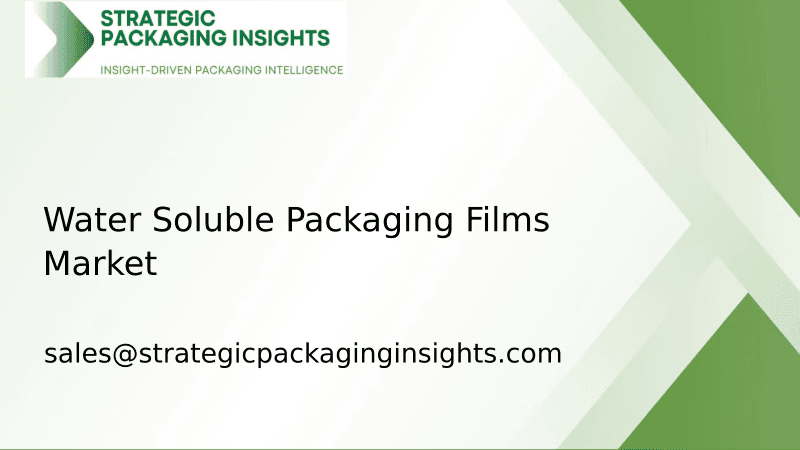
The Water Soluble Packaging Films market was valued at $2.8 billion in 2024 and is projected to reach $5.6 billion by 2033, growing at a CAGR of 8.1% during the forecast period 2025–2033.

The Aluminium Foil Packaging market was valued at $25 billion in 2024 and is projected to reach $40 billion by 2033, growing at a CAGR of 5.5% during the forecast period 2025–2033.

The self-heating food packaging market was valued at $4.5 billion in 2024 and is projected to reach $7.8 billion by 2033, growing at a CAGR of 6.2% during the forecast period 2025–2033.

The Smart Container market was valued at $2.5 billion in 2024 and is projected to reach $8.7 billion by 2033, growing at a CAGR of 14.5% during the forecast period 2025–2033.

The Automatic Labeling Machine market was valued at $2.5 billion in 2024 and is projected to reach $4.8 billion by 2033, growing at a CAGR of 7.2% during the forecast period 2025–2033.

The Hot Melt Glue Labeler market was valued at $1.2 billion in 2024 and is projected to reach $2.3 billion by 2033, growing at a CAGR of 6.5% during the forecast period 2025–2033.

The Ethical Label market was valued at $1.5 billion in 2024 and is projected to reach $3.2 billion by 2033, growing at a CAGR of 8.5% during the forecast period 2025–2033.

The Packaging Tensioner market was valued at $1.2 billion in 2024 and is projected to reach $2.3 billion by 2033, growing at a CAGR of 6.5% during the forecast period 2025–2033.
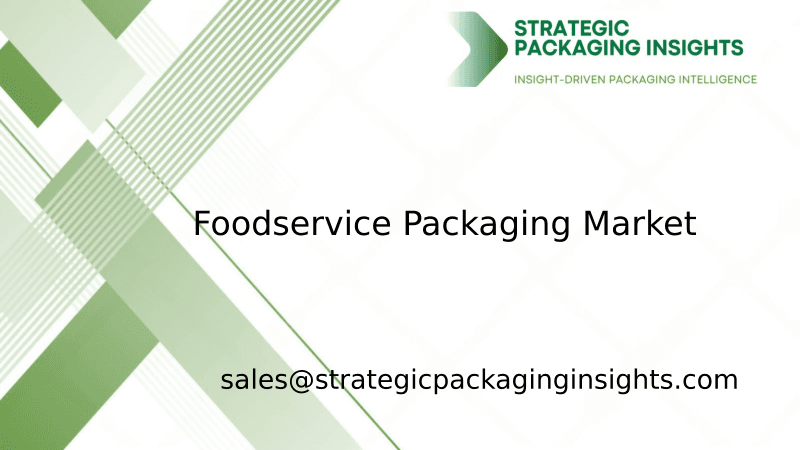
The foodservice packaging market was valued at $120 billion in 2024 and is projected to reach $180 billion by 2033, growing at a CAGR of 4.5% during the forecast period 2025–2033.

The nano-enabled packaging market was valued at $15.2 billion in 2024 and is projected to reach $35.6 billion by 2033, growing at a CAGR of 9.5% during the forecast period 2025–2033.
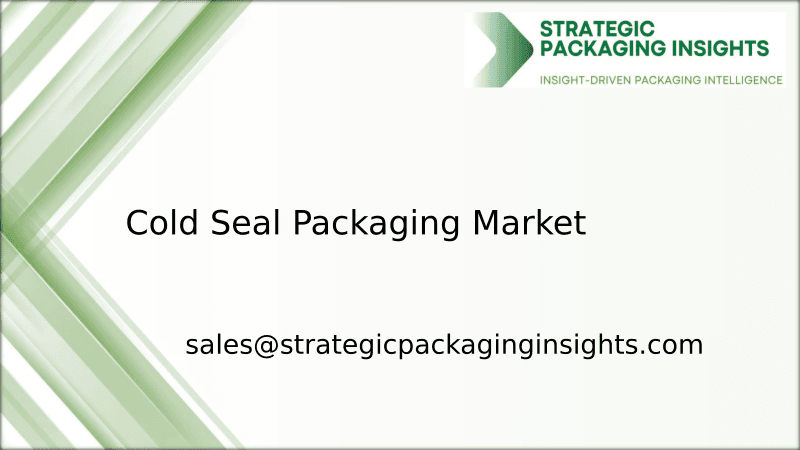
The Cold Seal Packaging market was valued at $1.5 billion in 2024 and is projected to reach $2.3 billion by 2033, growing at a CAGR of 4.8% during the forecast period 2025–2033.

The Transparent Barrier Packaging Films market was valued at $12.5 billion in 2024 and is projected to reach $20.3 billion by 2033, growing at a CAGR of 5.8% during the forecast period 2025–2033.
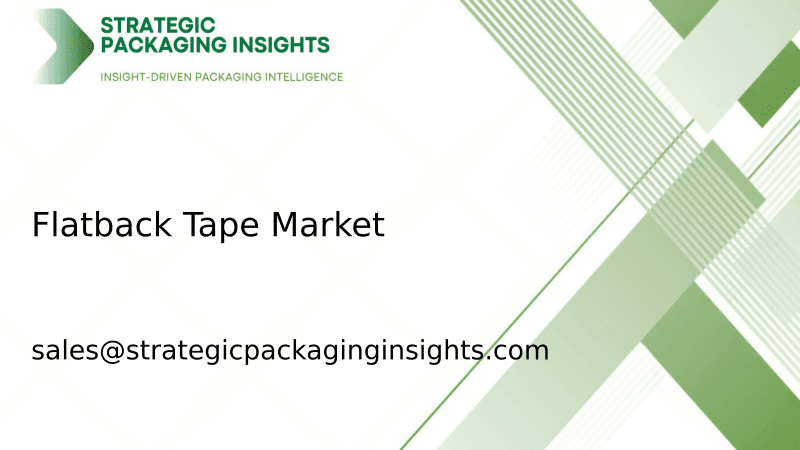
The Flatback Tape market was valued at $2.5 billion in 2024 and is projected to reach $4.1 billion by 2033, growing at a CAGR of 5.8% during the forecast period 2025–2033.
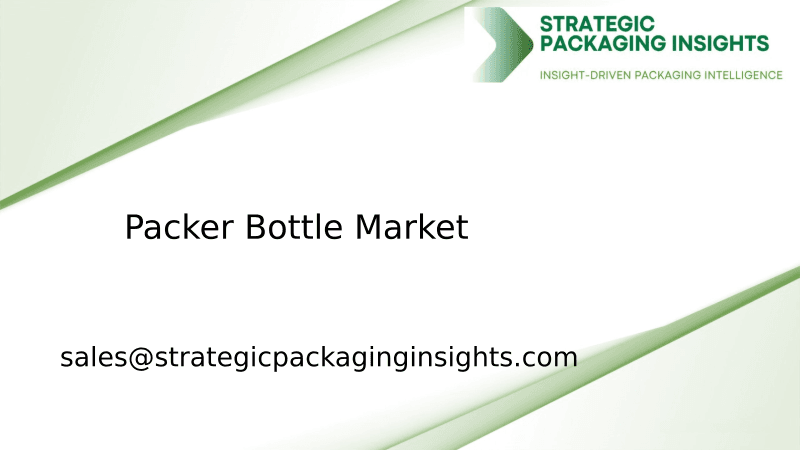
The packer bottle market was valued at $3.5 billion in 2024 and is projected to reach $5.8 billion by 2033, growing at a CAGR of 5.2% during the forecast period 2025–2033.
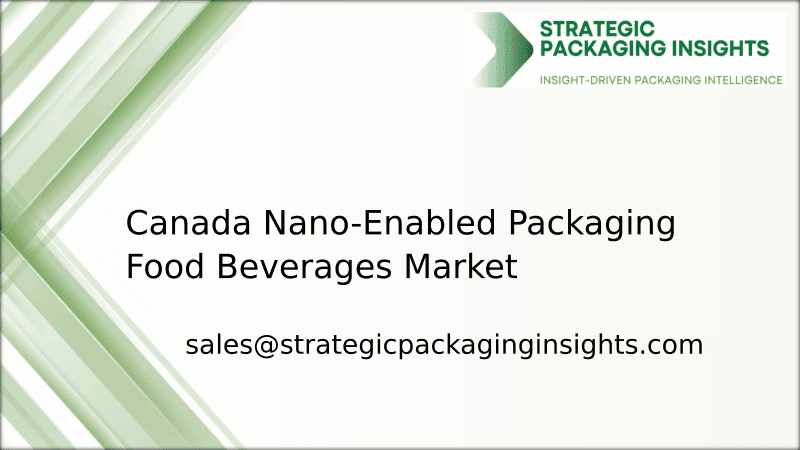
The Canada Nano-Enabled Packaging Food Beverages market was valued at $1.2 billion in 2024 and is projected to reach $3.5 billion by 2033, growing at a CAGR of 12.5% during the forecast period 2025–2033.
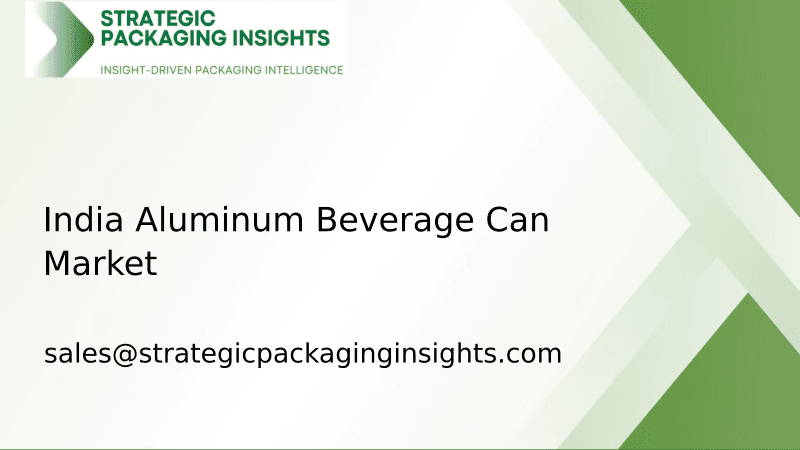
The India Aluminum Beverage Can market was valued at $1.2 billion in 2024 and is projected to reach $2.5 billion by 2033, growing at a CAGR of 8.5% during the forecast period 2025–2033.
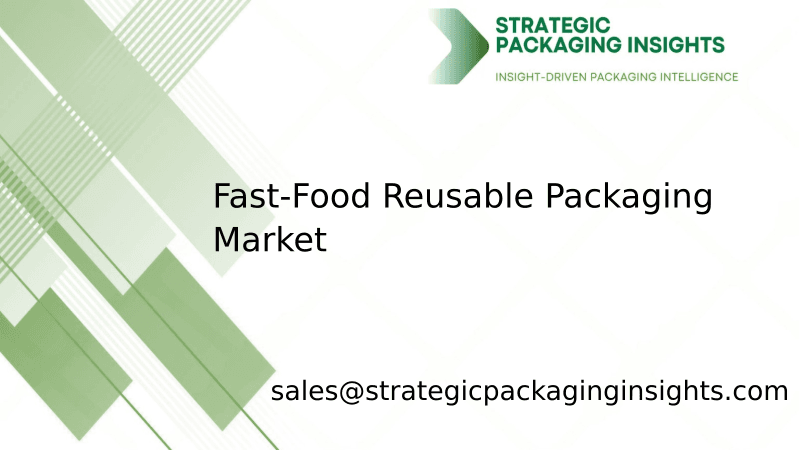
The fast-food reusable packaging market was valued at $1.2 billion in 2024 and is projected to reach $3.5 billion by 2033, growing at a CAGR of 12.5% during the forecast period 2025–2033.
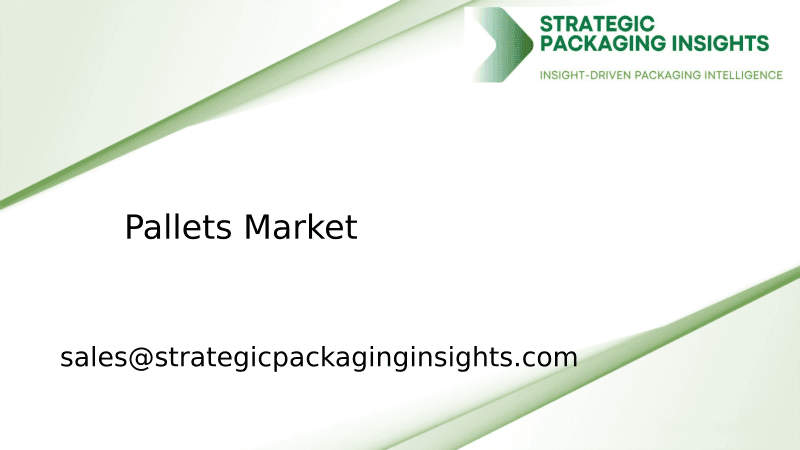
The pallets market was valued at $59.91 billion in 2024 and is projected to reach $88.69 billion by 2033, growing at a CAGR of 4.5% during the forecast period 2025–2033.
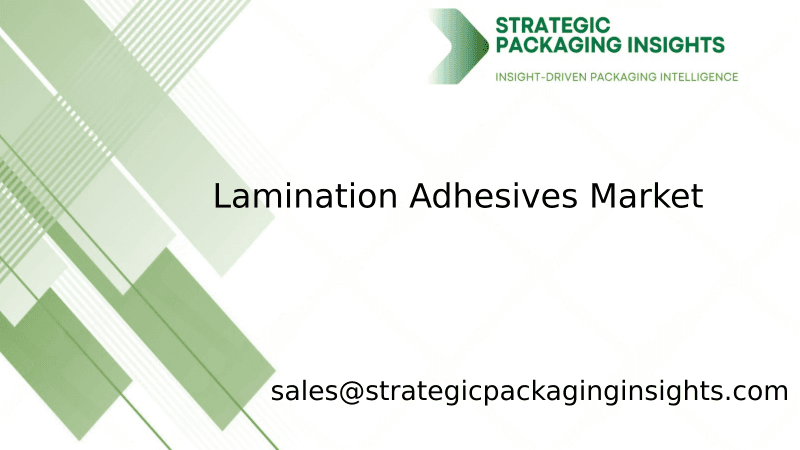
The lamination adhesives market was valued at $2.5 billion in 2024 and is projected to reach $4.1 billion by 2033, growing at a CAGR of 5.8% during the forecast period 2025–2033.

The garment packing machine market was valued at $1.2 billion in 2024 and is projected to reach $2.5 billion by 2033, growing at a CAGR of 8.5% during the forecast period 2025–2033.
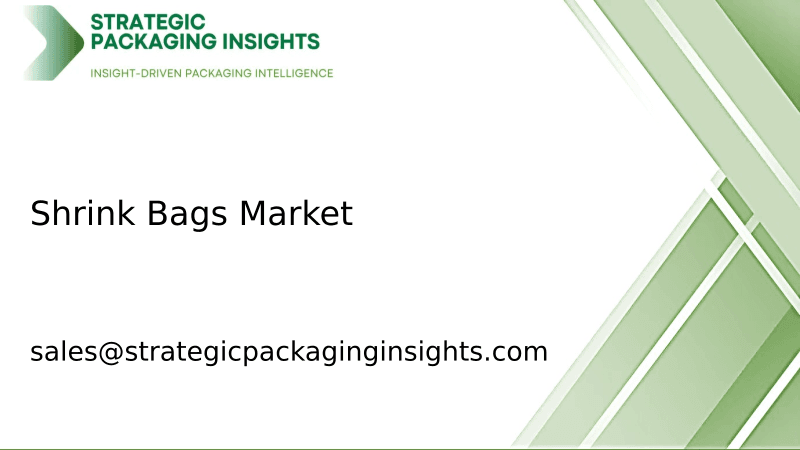
The shrink bags market was valued at $3.5 billion in 2024 and is projected to reach $5.8 billion by 2033, growing at a CAGR of 5.2% during the forecast period 2025–2033.

The beverage packaging market was valued at $128 billion in 2024 and is projected to reach $186 billion by 2033, growing at a CAGR of 4.2% during the forecast period 2025–2033.

The North America Freight and Logistics market was valued at $1,200 billion in 2024 and is projected to reach $1,800 billion by 2033, growing at a CAGR of 4.5% during the forecast period 2025–2033.
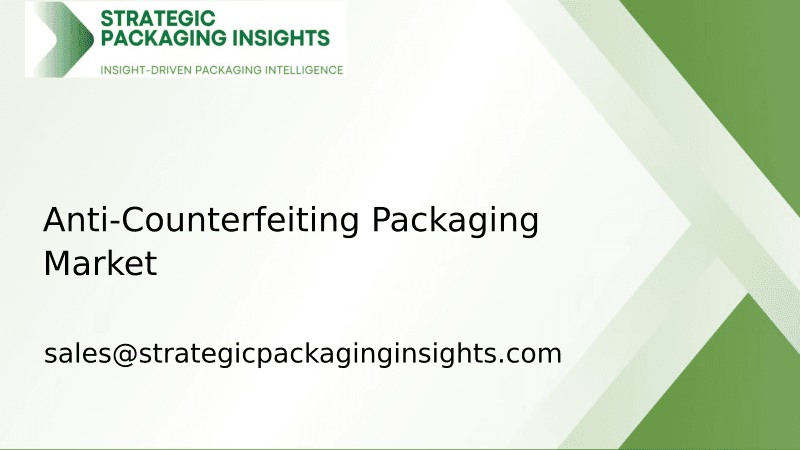
The Anti-Counterfeiting Packaging market was valued at $105 billion in 2024 and is projected to reach $182 billion by 2033, growing at a CAGR of 6.5% during the forecast period 2025–2033.

The corrugated board packaging market was valued at $250 billion in 2024 and is projected to reach $380 billion by 2033, growing at a CAGR of 4.5% during the forecast period 2025–2033.

The Water Soluble Packaging Films market was valued at $2.8 billion in 2024 and is projected to reach $5.6 billion by 2033, growing at a CAGR of 8.1% during the forecast period 2025–2033.

The Aluminium Foil Packaging market was valued at $25 billion in 2024 and is projected to reach $40 billion by 2033, growing at a CAGR of 5.5% during the forecast period 2025–2033.

The self-heating food packaging market was valued at $4.5 billion in 2024 and is projected to reach $7.8 billion by 2033, growing at a CAGR of 6.2% during the forecast period 2025–2033.

The Smart Container market was valued at $2.5 billion in 2024 and is projected to reach $8.7 billion by 2033, growing at a CAGR of 14.5% during the forecast period 2025–2033.

The Automatic Labeling Machine market was valued at $2.5 billion in 2024 and is projected to reach $4.8 billion by 2033, growing at a CAGR of 7.2% during the forecast period 2025–2033.

The Hot Melt Glue Labeler market was valued at $1.2 billion in 2024 and is projected to reach $2.3 billion by 2033, growing at a CAGR of 6.5% during the forecast period 2025–2033.

The Ethical Label market was valued at $1.5 billion in 2024 and is projected to reach $3.2 billion by 2033, growing at a CAGR of 8.5% during the forecast period 2025–2033.

The Packaging Tensioner market was valued at $1.2 billion in 2024 and is projected to reach $2.3 billion by 2033, growing at a CAGR of 6.5% during the forecast period 2025–2033.

The foodservice packaging market was valued at $120 billion in 2024 and is projected to reach $180 billion by 2033, growing at a CAGR of 4.5% during the forecast period 2025–2033.

The nano-enabled packaging market was valued at $15.2 billion in 2024 and is projected to reach $35.6 billion by 2033, growing at a CAGR of 9.5% during the forecast period 2025–2033.

The Cold Seal Packaging market was valued at $1.5 billion in 2024 and is projected to reach $2.3 billion by 2033, growing at a CAGR of 4.8% during the forecast period 2025–2033.

The Transparent Barrier Packaging Films market was valued at $12.5 billion in 2024 and is projected to reach $20.3 billion by 2033, growing at a CAGR of 5.8% during the forecast period 2025–2033.

The Flatback Tape market was valued at $2.5 billion in 2024 and is projected to reach $4.1 billion by 2033, growing at a CAGR of 5.8% during the forecast period 2025–2033.

The packer bottle market was valued at $3.5 billion in 2024 and is projected to reach $5.8 billion by 2033, growing at a CAGR of 5.2% during the forecast period 2025–2033.

The Canada Nano-Enabled Packaging Food Beverages market was valued at $1.2 billion in 2024 and is projected to reach $3.5 billion by 2033, growing at a CAGR of 12.5% during the forecast period 2025–2033.

The India Aluminum Beverage Can market was valued at $1.2 billion in 2024 and is projected to reach $2.5 billion by 2033, growing at a CAGR of 8.5% during the forecast period 2025–2033.

The fast-food reusable packaging market was valued at $1.2 billion in 2024 and is projected to reach $3.5 billion by 2033, growing at a CAGR of 12.5% during the forecast period 2025–2033.

The pallets market was valued at $59.91 billion in 2024 and is projected to reach $88.69 billion by 2033, growing at a CAGR of 4.5% during the forecast period 2025–2033.

The lamination adhesives market was valued at $2.5 billion in 2024 and is projected to reach $4.1 billion by 2033, growing at a CAGR of 5.8% during the forecast period 2025–2033.

The garment packing machine market was valued at $1.2 billion in 2024 and is projected to reach $2.5 billion by 2033, growing at a CAGR of 8.5% during the forecast period 2025–2033.

The shrink bags market was valued at $3.5 billion in 2024 and is projected to reach $5.8 billion by 2033, growing at a CAGR of 5.2% during the forecast period 2025–2033.

The beverage packaging market was valued at $128 billion in 2024 and is projected to reach $186 billion by 2033, growing at a CAGR of 4.2% during the forecast period 2025–2033.

The North America Freight and Logistics market was valued at $1,200 billion in 2024 and is projected to reach $1,800 billion by 2033, growing at a CAGR of 4.5% during the forecast period 2025–2033.

The Anti-Counterfeiting Packaging market was valued at $105 billion in 2024 and is projected to reach $182 billion by 2033, growing at a CAGR of 6.5% during the forecast period 2025–2033.
